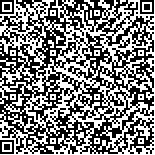下载中心
优秀审稿专家
优秀论文
相关链接
摘要

月球是除太阳外对地张角最大的天体,反射率稳定性为10-8每年,适合用于遥感卫星的辐射定标、夜间地基大气遥感和夜间卫星遥感,但月球辐射照度模型的精度束缚了上述应用的发展。为检验现有ROLO(RObotic Lunar Observatory)和MT2009(Miller-Turner 2009)地基整盘月球辐射照度模型的精度,国家卫星气象中心于2015年底至2016年初在云南丽江组织了3个月的地基对月观测,使用高光谱月球成像光谱仪获取了399.00—1060.00 nm连续光谱的月球辐射照度。基于整盘月球辐射照度模型,利用丽江地基对月观测试验资料,对比模型与模型、模型与丽江地基观测月球辐射照度。结果表明:(1)MT2009与ROLO模型在短波红外谱段的差异明显大于可见光谱段;(2)地基观测高光谱月球辐射照度结果与ROLO模型更接近,但是可见光波段比ROLO模型辐射照度平均小5.86%左右。为探究差异产生的主要来源,对结果还进行了进一步的分析和讨论,以期为今后月球辐射模型的改进和夜间微光遥感研究提供经验和依据。
Lunar is the second largest field-of-angle object near the Earth, and its reflectance can be considered stable to 10-8 per year. Thus, lunar is selected as the radiometric standard for the calibration of Earth-orbiting satellite-borne instruments and as the radiance source at night similar to solar at daytime for ground-based and satellite remote sensing. However, the precision of existing lunar irradiance models is insufficient to satisfy application requirements. To improve lunar irradiance models and verify the accuracy of the models, a three-month Earth-based observation of lunar was conducted on December 2015 by the National Satellite Meteorological Center, China Meteorological Administration. The hyper-spectral irradiance of lunar ranging from 399 nm to 1060 nm was retrieved by an imaging spectrometer in Lijiang, Yunnan. This study compared Earth-based lunar observations and other models (ROLO and MT2009 models). Results show that the observations are more similar to the ROLO model than to the MT2009 model, and the difference between the two models is larger in the shortwave infrared region than in the visible region. The average relative difference between the ROLO model and ground-based observations is approximately 5.86%. Causes of this difference are discussed in this study, which provides a theoretical foundation for establishing an accurate model of lunar irradiance.

